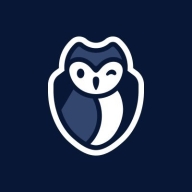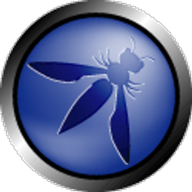

OWASP Zap and GitGuardian Public Monitoring are popular in application security testing and code security monitoring. GitGuardian Public Monitoring holds a slight advantage in features, while OWASP Zap is preferred for pricing and support.
Features: OWASP Zap provides robust security testing with web application scanning functions, security alerts, and automated testing protocols. GitGuardian Public Monitoring offers secret detection, real-time monitoring, and extensive data breach tracking, making it a preferred choice for those seeking thorough code security monitoring.
Room for Improvement: OWASP Zap can enhance configuration simplicity, integration with third-party tools, and user interface. GitGuardian Public Monitoring can improve integration capabilities, expand configuration options, and streamline user access controls.
Ease of Deployment and Customer Service: OWASP Zap is known for easy deployment and effective support. GitGuardian Public Monitoring offers streamlined deployment with some challenges in accessing detailed technical support, providing slight advantages for OWASP Zap in support.
Pricing and ROI: OWASP Zap is considered cost-effective, offering excellent ROI for smaller teams due to its competitive pricing. GitGuardian Public Monitoring, although more costly, provides high value through advanced security features, resulting in solid ROI for enterprises investing in comprehensive security monitoring.


GitGuardian Public Monitoring allows real-time GitHub scanning and alerting to uncover sensitive company information hiding in online repositories. It monitors both organization repositories and developers' personal repositories. The solution gives visibility to developers and security teams on this very critical blindspot that are the organization developers' personal repositories on GitHub (80% of leaked corporate secrets on public GitHub come from developers’ personal repositories).
GitGuardian Public Monitoring is particularly interesting for companies with large development teams (above 200 developers) and modern development practices.
GitGuardian Public Monitoring cover 350+ API providers, database connection strings, private keys, certificates, usernames and passwords and intellectual property. It uses sophisticated pattern matching techniques to detect credentials that cannot be strictly defined with a distinctive pattern (like unprefixed credentials). The algorithm has a high precision (91% “true positive” feedback following our alerts, as reported by our users.)
The alerting is done in real-time (a few seconds after the secret was publicly exposed) which allows fast remediation involving in a collaborative way developers, security teams and operations.
GitGuardian Public Monitoring also allows red teams and pentesters to proactively look for sensitive information by performing complex queries on 12 billion documents and metadata from more than 3 years of GitHub history.
GitGuardian Public Monitoring scans public GitHub activity in real-time, helping organizations detect sensitive information leaks in source code repositories. Our solution gives Threat Intelligence and Security teams full visibility over their organization’s public GitHub Attack Surface, by monitoring both organization-owned repositories and developers' personal repositories.
With 80% of secrets and credentials leaks on public GitHub finding their source in developers' personal repositories, GitGuardian for Public Monitoring helps organizations address a critical security blind spot.
With real-time incident notification, Threat Intelligence and Security teams are guaranteed to reach the incident scene before everyone else and take action to mitigate the threat of breaches and intrusions.
OWASP Zap is a free and open-source web application security scanner.
The solution helps developers identify vulnerabilities in their web applications by actively scanning for common security issues.
With its user-friendly interface and powerful features, Zap is a popular choice among developers for ensuring the security of their web applications.
We monitor all Static Application Security Testing (SAST) reviews to prevent fraudulent reviews and keep review quality high. We do not post reviews by company employees or direct competitors. We validate each review for authenticity via cross-reference with LinkedIn, and personal follow-up with the reviewer when necessary.